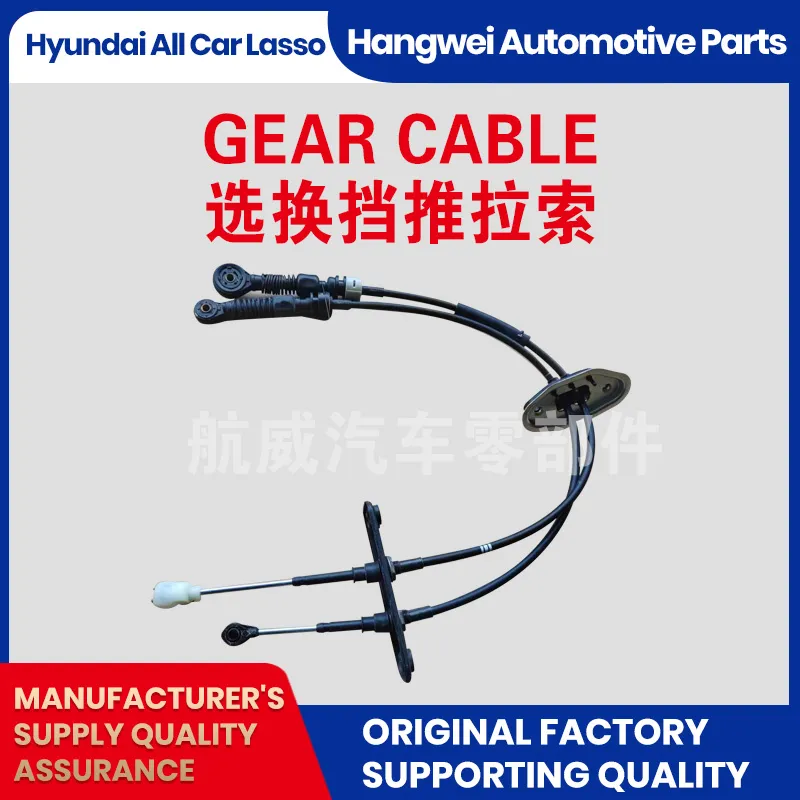fixing throttle cable
Fixing the Throttle Cable A Comprehensive Guide
The throttle cable is a crucial component in any vehicle equipped with a cable-actuated throttle system. It acts as the bridge between the accelerator pedal and the engine's throttle body, translating the driver's input into the vehicle's acceleration. Over time, this cable may stretch, fray, or even break, leading to performance issues or unsafe driving conditions. This article will explore how to diagnose, troubleshoot, and fix throttle cable problems, ensuring your vehicle operates smoothly and safely.
Identifying Throttle Cable Issues
Before embarking on repairs, it’s essential to determine if the throttle cable indeed requires attention. Common symptoms of a faulty throttle cable include
1. Unresponsive Acceleration If pressing the accelerator pedal does not result in increased vehicle speed, or if there is a delay, the throttle cable may be stuck or broken. 2. Sticking Throttle A throttle cable that has accumulated dirt or wear might stick, causing erratic engine responses or an unstable idle.
3. Visible Wear and Tear Inspect the cable itself for fraying, cracking, or other signs of damage. If the cable looks worn, it's time for a replacement.
4. Check Engine Light If your vehicle's onboard diagnostics system detects issues with the throttle response, it may prompt a check engine light, warranting further investigation.
Tools and Materials Needed
Before beginning the repair process, you’ll need several tools and materials
- Wrench set Various sizes, as needed for your vehicle. - Screwdrivers Flathead and Phillips, depending on fasteners. - Replacement throttle cable Ensure compatibility with your vehicle’s make and model. - Lubricant Silicone spray or similar lubricant can help if the cable isn't broken but merely sticky. - Safety gear Gloves and safety glasses to protect your hands and eyes during the repair process.
Step-by-Step Guide to Fixing the Throttle Cable
Step 1 Gather Information
Start by consulting your vehicle’s service manual. This resource will provide specific instructions regarding your vehicle’s throttle cable system and any particular notes on replacement or adjustment procedures.
Step 2 Locate the Throttle Cable
Open the hood and find the throttle cable. It typically runs from the accelerator pedal inside the cabin to the throttle body on the engine. Follow it along its route, ensuring you are aware of how it's connected at either end.
fixing throttle cable

Step 3 Check for Problems
With the engine off, manually manipulate the throttle cable while inspecting its operation. Look for any binding or sticking points. If necessary, apply some lubricant to the cable and the throttle body linkage to free up any tight spots.
Step 4 Disconnect the Battery
For safety purposes, disconnect the negative terminal of the battery before working on any electrical components.
Step 5 Remove the Old Throttle Cable
Locate the mounting brackets or clips holding the cable in place. Use the appropriate tools to remove these, and carefully disconnect the cable from the throttle body by detaching it from its housing.
Step 6 Install the New Throttle Cable
Carefully install the new cable in the reverse order of removal, ensuring it is properly routed and secured without any twists or kinks. Adjust any tension settings if applicable, as per your vehicle’s specifications.
Step 7 Reconnect the Battery
Once the new cable is installed, reconnect the battery and turn the ignition to the on position without starting the engine to check the throttle cable's movement.
Step 8 Test Drive
After ensuring everything is properly connected, take the vehicle for a short test drive. Pay attention to throttle response, ensuring smooth acceleration and deceleration without any sticking or delays.
Conclusion
While replacing or fixing a throttle cable may seem daunting, with the right tools and a methodical approach, it can be a manageable task. Regular maintenance, including periodic inspections of the cable, can prevent unexpected failures and keep your vehicle safe and responsive. Always prioritize safety and consult professionals if you feel uncertain about any part of the process. Happy driving!
-
Upgrade Your Control with Premium Throttle CablesNewsAug.08,2025
-
Stay in Control with Premium Hand Brake CablesNewsAug.08,2025
-
Experience Unmatched Performance with Our Clutch HosesNewsAug.08,2025
-
Ensure Safety and Reliability with Premium Handbrake CablesNewsAug.08,2025
-
Enhance Your Vehicle with High-Performance Clutch LinesNewsAug.08,2025
-
Elevate Your Ride with Premium Gear CablesNewsAug.08,2025
